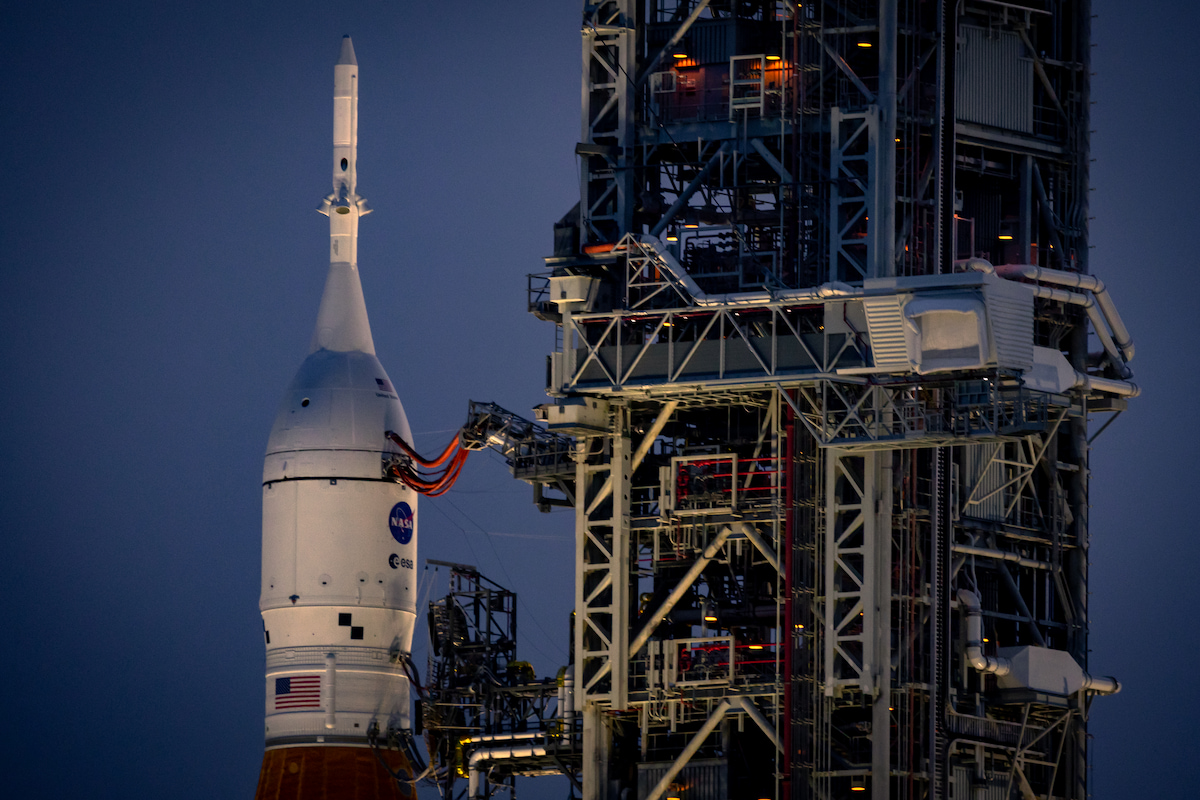
NASA announced in a stacked press conference that the agency is delaying its much anticipated Artemis 2 mission over safety concerns with the Lockheed Martin Orion spacecraft. Now slated for a September 2025 launch date, the delay also extends to Artemis 3 which is planned to liftoff one year after Artemis 2.
NASA delays next two Artemis missions
In what is turning out to be a bad week for NASA’s lunar exploration programs, NASA announced it was delaying its next launch of the agency’s Space Launch System by nearly a year. While we all were expecting some sort of delay into early 2025, 10 months was a much larger delay than we anticipated.
The delays to both Artemis 2 and Artemis 3 come with concerns in Lockheed Martin’s Orion spacecraft, both in the heat shield and the life support system. We’ve known about the issues NASA found after Artemis 1 of more than expected heat shield material loss during reentry. A study into what caused it was suppose to be done in late spring of this year, however it might seem that study or its early findings show more work needs to be done. Managers were hoping it was just because of the “skipping” reentry profile Orion took to stress test the heat shield.
According to NASA, hardware to be used in Artemis 3’s life support system has found failures in some circuitry that handles valves. This would affect a large part of the life support system, including removing carbon dioxide. Artemis 3, however, is linked to Artemis 2 in launch date, obviously you need a crewed test flight before a crewed landing. The mission is set to be no earlier than one year after Artemis 2 lifts off from Florida.
A third issue that wasn’t linked to either mission directly was Orion’s abort system. NASA has concerns that during certain points of ascent that Orion would not have enough power for all of its systems. “The concern would be not that the vehicle wouldn’t be able to abort safely off of SLS, but that it would be able to maintain all of the power margin that we need from that separation all the way to landing,” said Amit Kshatriya, NASA deputy associate administrator for the Moon to Mars Program.
However, the evaluation of this system is still in the early process.
Join our Discord Server: Join the community with forums and chatrooms about space! Also, directly support us via a Server Subscription!
Starship and Axiom suits would have delayed Artemis 3
Another topic of Tuesday’s press conference was Artemis 3’s linkage to the other two big ticket items for landing on the Moon, a lander and space suit.
NASA officials acknowledged again the development delays both with SpaceX and Axiom could cause further delays to Artemis 3’s launch date. While Axiom’s suit design is less public, Starship’s development hurdles are well understood.
Starship has a lot of flight tests it needs to complete between now and Artemis 3 including in space cryogenic refueling, an uncrewed landing test on the Moon, and also just getting the rocket’s reliability up is a big thing.
SpaceX’s representative, Jessica Jensen Vice President of Customer Operations and Integration, stated that the company plans to launch its next Starship rocket, pending regulatory approval, in February.
Jensen also discussed the number of flights it will take to refuel a Starship vehicle in orbit, that number is now at “tenish.” That number will still need to be refined with future flight tests, something SpaceX will have to start conducting soon to meet its goals.
Overall, NASA is dedicated to making its Artemis program work with commercial partners, even if that means delaying its missions because of development troubles. What SpaceX is doing with Starship has never been done before, so delays are of course expected, and Axiom Space was a late addition to the program so delays there aren’t a surprise either.
The silver lining to this all is that unlike Boeing and Lockheed, whose SLS and Orion programs have littler to none commercial viability, SpaceX and Axiom’s programs directly link to the success each of their company’s goals. So concerns over these systems never getting completed can be squashed.
FTC: We use income earning auto affiliate links. More.


Comments